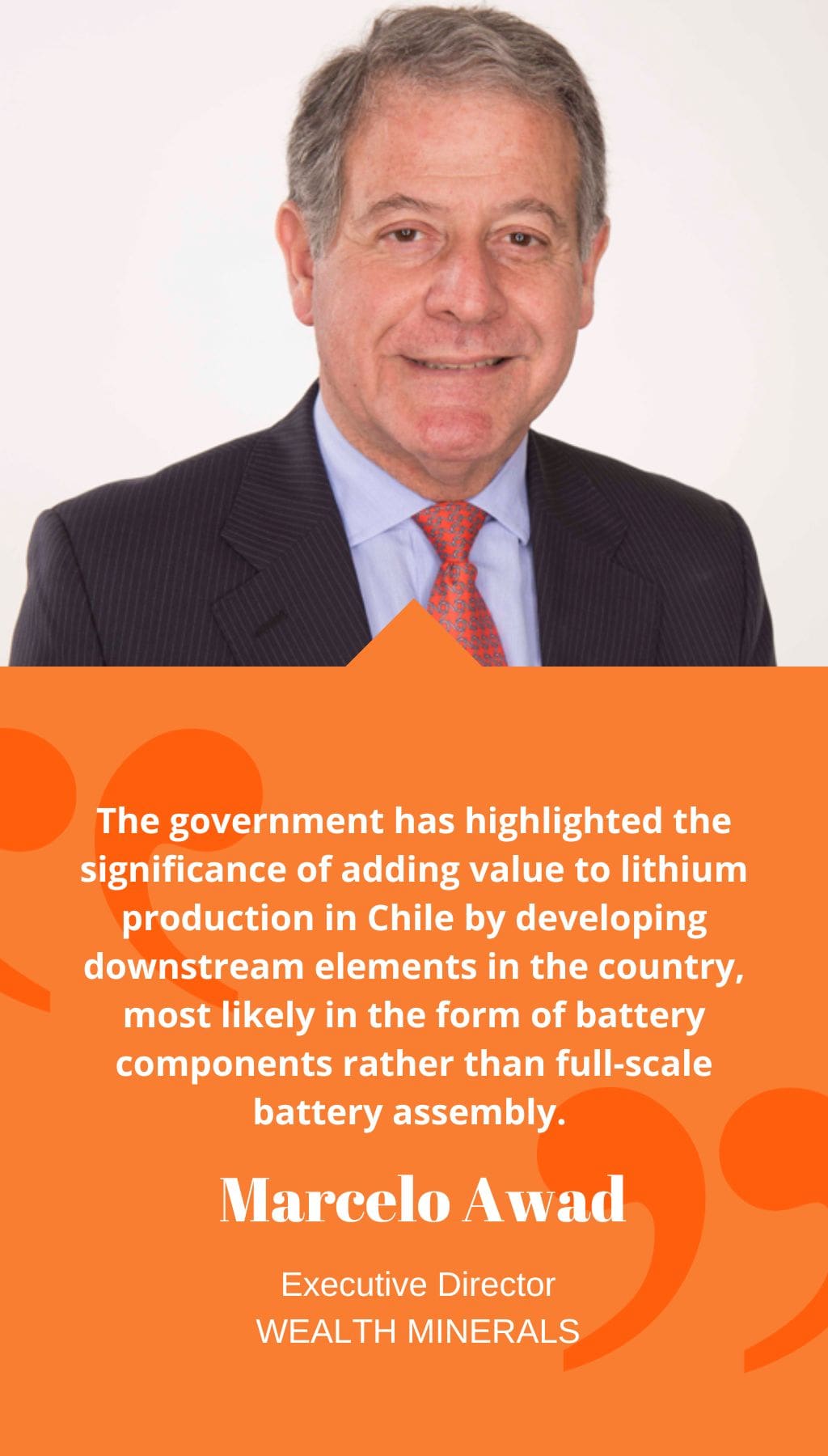
- Chile | 25 January 2022

Could you describe the discussions you’ve had with the new government regarding lithium regulations that could accelerate the development of Wealth Minerals’ Atacama Salar and Ollague assets?
We have reached out to Chile’s new mining minister, Marcela Hernando, who I have met before while I was the CEO of Antofagasta PLC and she was the mayor of Antofagasta. She has a lot of experience and knowledge about the industry, having chaired a mining committee in the lower house of congress for over three years. Moreover, she has always listened to the concerns of the mining sector, and we are pleased that she now serves as the mining minister. The new president and mining minister have both emphasized the importance of developing Chile’s lithium business. They believe that the window to develop lithium assets is now and possibly for the next 10-15 years since the substitutions for lithium are already at the laboratory level.
The government has highlighted the significance of adding value to lithium production in Chile by developing downstream elements in the country, most likely in the form of battery components rather than full-scale battery assembly. Additionally, President Boric has spoken about creating a national lithium company. While the State understands that it needs revenue generated by mining to use elsewhere in the economy, it is unlikely to do anything radical that would jeopardize that source of income. However, there is a risk from the Constitutional Convention Committee, which proposed a draft to nationalize all mining companies in Chile. Although we do not believe that such a proposal will pass, it creates noise in the short term.
What could the creation of a national lithium company mean for the private sector involved in Chile’s lithium industry?
President Boric has been clear that if a state-owned lithium company were to be created, it would assist private producers rather than replace them. The government understands that it needs revenue generated by mining to use elsewhere in the economy, so it is unlikely to do anything radical that would jeopardize that source of income. The primary risk that we see is the Constitutional Convention Committee’s proposal to nationalize all mining companies in Chile. Although we do not believe that such a proposal will pass, it creates noise in the short term.
How do you view the fundamentals of lithium for 2022 and 2023?
I believe that demand will outweigh supply until around 2030. Although there is sufficient lithium in the world, the challenge is to achieve a battery-grade product economically. Prices have risen dramatically in 2021 and Q1 2022, but I see a longer-term price stabilizing around US$15,000 to US$20,000 per tonne. This is comfortable for companies like SQM and Albemarle that are mining the Atacama Salar, but it will be a challenge for many hard rock or clay deposits elsewhere.
What potential do you see in the World Copper’s Escalones project?
Most of the companies that held Escalones in the past were drilling very deep in search of a sulfide deposit, without paying sufficient attention to the oxide layer. Sulfide deposits, particularly in high-altitude, arid parts of the country, require huge output and capex to justify investment. We acquired the asset and spun out a separate company because we are very excited about the oxide layer. We will start a drilling campaign in March 2022 to explore this further and discovered an area of yellow color, our primary target called Mancha Amarilla, which we believe to be part of the main oxide deposit that has tremendous potential.














